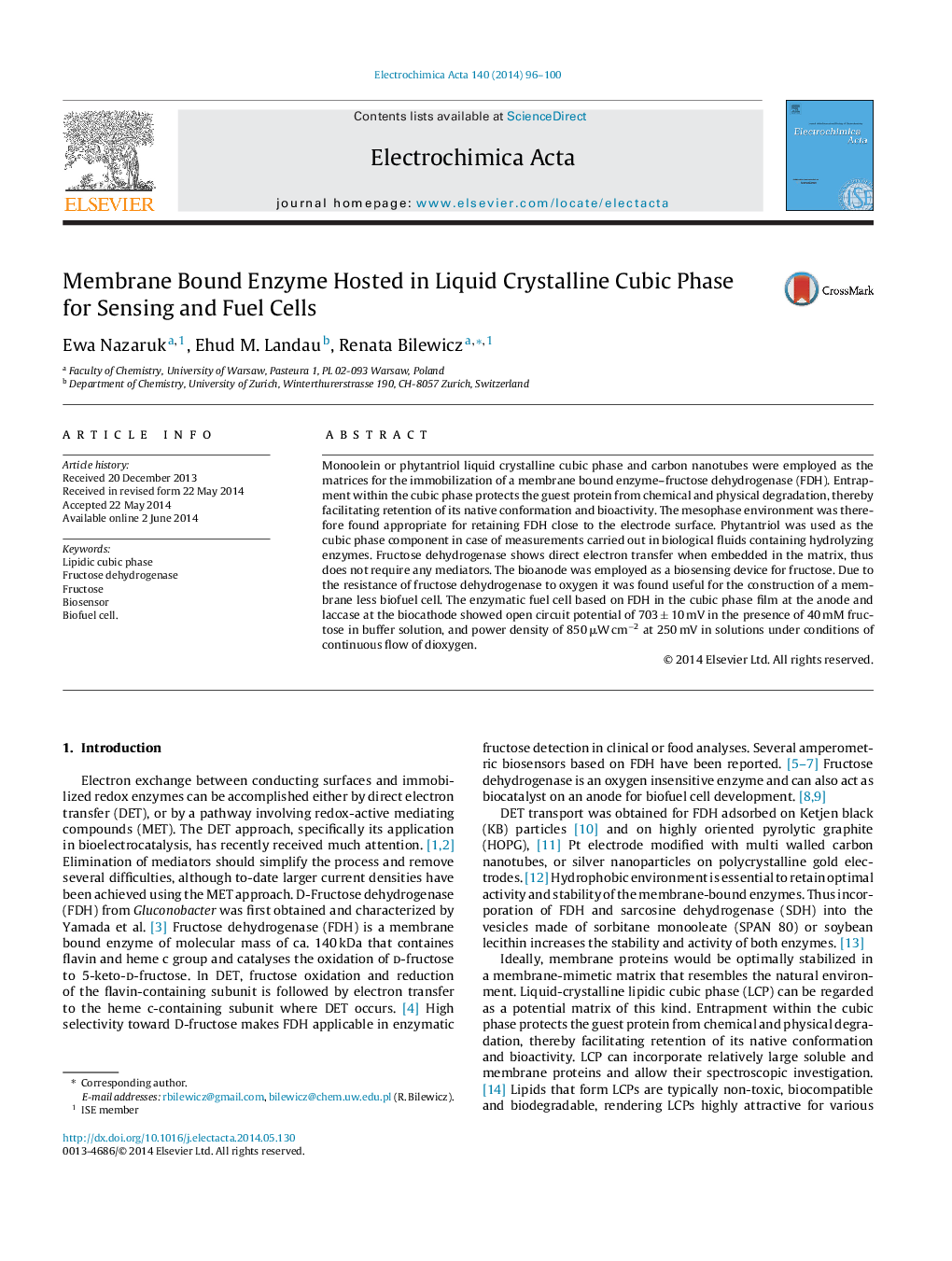| Article ID | Journal | Published Year | Pages | File Type |
|---|---|---|---|---|
| 185198 | Electrochimica Acta | 2014 | 5 Pages |
•FDH shows DET in cubic mesophase film on the electrode.•The FDH/mesophase modified electrode is useful for fructose sensing.•Fructose-oxygen fuel cell shows power density 850 μW cm−2 in 40 mM fructose solution.
Monoolein or phytantriol liquid crystalline cubic phase and carbon nanotubes were employed as the matrices for the immobilization of a membrane bound enzyme–fructose dehydrogenase (FDH). Entrapment within the cubic phase protects the guest protein from chemical and physical degradation, thereby facilitating retention of its native conformation and bioactivity. The mesophase environment was therefore found appropriate for retaining FDH close to the electrode surface. Phytantriol was used as the cubic phase component in case of measurements carried out in biological fluids containing hydrolyzing enzymes. Fructose dehydrogenase shows direct electron transfer when embedded in the matrix, thus does not require any mediators. The bioanode was employed as a biosensing device for fructose. Due to the resistance of fructose dehydrogenase to oxygen it was found useful for the construction of a membrane less biofuel cell. The enzymatic fuel cell based on FDH in the cubic phase film at the anode and laccase at the biocathode showed open circuit potential of 703 ± 10 mV in the presence of 40 mM fructose in buffer solution, and power density of 850 μW cm−2 at 250 mV in solutions under conditions of continuous flow of dioxygen.
Graphical abstractTOC.Figure optionsDownload full-size imageDownload as PowerPoint slide
